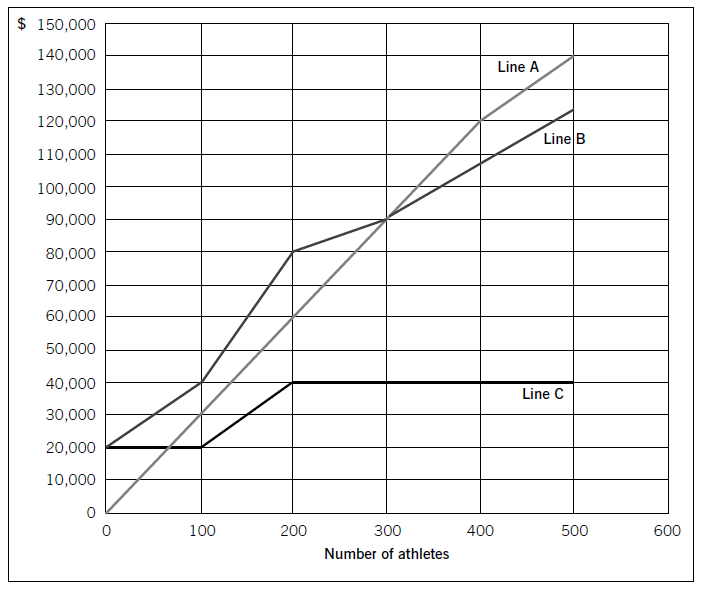黑龙江考生想知道ACCA的科目F3怎么备考?
发布时间:2020-01-10
步入2020年,离ACCA考试越来越近了,虽然在ACCA考试中F1科目是难度比较低的一个考试科目了,但还是很多ACCAer们不知道如何备考考试科目F1。不用担心,小伙伴们所遇到的问题51题库考试学习网都一一帮助大家找寻到了答案,现在就来告诉你:
F3科目介绍
F3财务会计师ACCA很重要的一个系列,主要包括财务会计的基本框架,如何运用复式记账法对企业发生的各项交易进行记录,对于考生的计算能力是一个十分巨大的挑战。试算平衡表的编制,合并报表的基本内容(该知识点在后续的F7、P2课程会有深入的学习),如何对财务报表进行分析,进一步探索报表数字背后的故事。作为财务会计基础类的一门课,要求学生夯实基础,为阶段学习打下坚实的基础。
备考心得
听网课与做题同步
报网课其实是最简单的,帮助最大的方法,听网课可以不用听直播课,但听课一定要和做题同步。
F3我就换了一种学习方式:听了一章的课程,就去做题,这样既巩固了这章课程的内容,又可以及时补漏了这章没学懂的。我觉得这种方式特别适合我这种记性不太好的人。
重难点要死磕到底
我的网课大概刷了20多天,后面报表的部分花的时间比较多,也是F3最难但又是最重要的部分。第一遍课听过去一脸懵,不知道讲了些什么,有点晕,自己又重新把讲义看了一遍,貌似悟到了一些
我是那种一个点没搞懂绝对不会放弃的人,于是又把没看懂的地方再看了一遍,然后在笔记本看自己总结的一些套路和需要注意的点,再去做BPP上的题。说实话有几个还是挺难的,它没有按套路出题,题目有些难懂,但是多读几遍,一句一句去分析还是能搞懂的。
做报表题我的思路是首先把套路写在草稿纸上然后再去一个点一个点去对应,这样子就不容易遗漏。因为我提前一个月就报名考试了,所以课上完了就没有任何可以停留的时间,就紧接着复习
讲义和刷题,孰轻孰重?
我的复习思路可能和大多数人不太一样,大部分人都把时间花在刷题上,而我是用周末整天的时间先把讲义看了一遍,边看边总结重点,每一次看讲义我都会有不同的收获,有些点之前不怎么明白的,也会在重复看讲义的时候豁然开朗,这时候也是最开心的。
考前查漏补缺不可少
第二遍BPP我只是把错题做了一遍,把一些概念性的题目总结在笔记本上。最后,考试的前一周,我就是听冲刺班的课和习题课,去查漏补缺,我个人认为这个课很重要,因为老师带着我把整本书的思路都串了一遍,这让我的整个知识框架更加得完整。
原地徘徊一千步,抵不上向前迈出第一步;心中想过无数次,不如挽起袖子大干一次。加油各位ACCAer们~
下面小编为大家准备了 ACCA考试 的相关考题,供大家学习参考。
(c) Explain the reasons for the concerns of the government of Happyland with companies such as TMC and
advise the directors of a strategy that might be considered in order to avoid being subject to any forthcoming
legislation concerning the environment. (5 marks)
(c) The government of Happyland will be concerned by the negative impact on the environment. The growth in the number of
children born in Happyland will have raised the demand for disposable nappies as is evidenced from the market size data
contained in the question. In some countries disposable nappies make up around 4% of all household waste and can take
up to five hundred years to decompose! The government will be concerned by the fact that trees are being destroyed in order
to keep babies and infant children in nappies. The disposal costs incurred by the government in terms of landfill etc will be
very high, hence its green paper on the effect of non-biodegradable products in Happyland. The costs of such operations as
the landfill for such products will need to be funded out of increased taxation.
It might be beneficial for the directors of TMC to develop more eco-friendly products such as washable nappies which, by
definition, are recyclable many times over during the life of the ‘product’. Many parents are now changing to ‘real nappies’
because they work out cheaper and better for the environment than disposables.
(b) Discuss ways in which the traditional budgeting process may be seen as a barrier to the achievement of the
aims of EACH of the following models for the implementation of strategic change:
(i) benchmarking;
(ii) balanced scorecard; and
(iii) activity-based models. (12 marks)
(b) Benchmarking
Benchmarks enable goals to be set that may be based on either external measures of ‘best practice’ organisations or internal
cross-functional comparisons which exhibit ‘best practice’. A primary aim of the traditional budgeting process is the setting of
realistic targets that can be achieved within the budget period. The setting of realistic targets means that the extent of
underperformance against ‘best practice’ standards loses visibility, and thus short-term financial targets remain the
predominant focus of the traditional budgeting process. It is arguable that because the budgetary reporting system purports
to give managers ‘control’, there is very little real incentive to seek out benchmarks which may be used to raise budgeted
performance targets. Much depends upon the prevailing organisational culture since benchmarking may be viewed as an
attempt by top management to impose impossible targets upon operational managers. The situation is further exacerbated
where organisations do not measure their success relative to their competition.
Balanced scorecard
The Balanced scorecard is often misunderstood as a consequence of the failure by top management to ensure that it is
implemented effectively within the organisation. Thus it may be viewed as the addition of a few non-financial measures to
the conventional budget. In an attempt to overcome this misperception many management teams now establish a
performance-rewards linkage based upon the achievement of Scorecard targets for the forthcoming budget period.
Unfortunately this can precipitate dysfunctional behaviour at every level within the organisation.
Even in situations where the Scorecard has been well-designed and well-implemented it is difficult for it to gain widespread
acceptance. This is because all too often there exists a culture which places a very high value upon the achievement of the
fixed annual targets in order to avoid the loss of status, recognition and rewards.
A well-constructed Scorecard contains a mix of long-term and short-term measures and therefore drives the company in the
direction of medium-term strategic goals which are supported by cross-functional initiatives. On the other hand, the budgeting
process focuses the organisation on the achievement of short-term financial goals supported by the initiatives of individual
departments. Budgets can also act as an impediment to the acceptance of responsibility by local managers for the
achievement of the Scorecard targets. This is often the case in situations where a continued emphasis exists on meeting shortterm
e.g. quarterly targets.
Activity-based models
Traditional budgets show the costs of functions and departments (e.g. staff costs and establishment costs) instead of the costs
of those activities that are performed by people (e.g. receipt of goods inwards, processing and dispatch of orders etc). Thus
managers have no visibility of the real ‘cost drivers’ of their business. In addition, it is probable that a traditional budget
contains a significant amount of non-value-added costs that are not visible to the managers. The annual budget also tends
to fix capacity for the forthcoming budget period thereby undermining the potential of Activity-based management (ABM)
analysis to determine required capacity from a customer demand perspective. Those experienced in the use of ABM
techniques are used to dealing with such problems, however their tasks would be much easier to perform. and their results
made more reliable if these problems were removed.
Swim Co offers training courses to athletes and has prepared the following breakeven chart:

Required:
(a) State the breakeven sales revenue for Swim Co and estimate, to the nearest $10,000, the company’s profit if 500 athletes attend a training course. (2 marks)
(b) Using the chart above, explain the cost and revenue structure of the company. (8 marks)
(a)ThebreakevensalesrevenueforSwimCois$90,000.Thecompany’sprofit,tothenearest$10,000,if500athletesattendthecourseis$20,000($140,000–$120,000).(Fromthegraph,itisclearthatthepreciseamountwillbenearer$17,000,i.e.$140,000–approximately$123,000.)(b)CoststructureFromthechart,itisclearthatLineCrepresentsfixedcosts,LineBrepresentstotalcostsandLineArepresentstotalrevenue.LineCshowsthatinitially,fixedcostsare$20,000evenifnoathletesattendthecourse.Thisleveloffixedcostsremainsthesameif100athletesattendbutoncethenumberofattendeesincreasesabovethislevel,fixedcostsincreaseto$40,000.LineBrepresentstotalcosts.If100athletesattend,totalcostsare$40,000($400perathlete).Since$20,000ofthisrelatestofixedcosts,thevariablecostperathletemustbe$200.Whenfixedcostsstepupbeyondthispointatthelevelof200athletes,totalcostsobviouslyincreaseaswellandLineBconsequentlygetsmuchsteeper.However,sincetherearenow200athletestoabsorbthefixedcosts,thecostperathleteremainsthesameat$400perathlete($80,000/200),eventhoughfixedcostshavedoubled.If300athletesattendthecourse,totalcostperathletebecomes$300each($90,000/300).Sincefixedcostsaccountfor$40,000ofthistotalcost,variablecoststotal$50,000,i.e.$166·67perathlete.So,economiesofscaleariseatthislevel,asdemonstratedbythefactthatLineBbecomesflatter.At400athletes,thegradientofthetotalcostslineisunchangedfrom300athleteswhichindicatesthatthevariablecostshaveremainedthesame.Thereisnofurtherchangeat500athletes;fixedandvariablecostsremainsteady.RevenuestructureAsregardstherevenuestructure,itcanbeseenfromLineAthatfor100–400athletesthepriceremainsthesameat$300perathlete.However,if500athletesattend,thepricehasbeenreducedasthetotalrevenuelinebecomesflatter.$140,000/500meansthatthepricehasgonedownto$280perathlete.Thiswasobviouslynecessarytoincreasethenumberofattendeesandatthispoint,profitismaximised.1
声明:本文内容由互联网用户自发贡献自行上传,本网站不拥有所有权,未作人工编辑处理,也不承担相关法律责任。如果您发现有涉嫌版权的内容,欢迎发送邮件至:contact@51tk.com 进行举报,并提供相关证据,工作人员会在5个工作日内联系你,一经查实,本站将立刻删除涉嫌侵权内容。
- 2020-01-09
- 2020-03-11
- 2020-04-25
- 2020-02-28
- 2020-05-11
- 2020-04-20
- 2020-01-10
- 2020-02-05
- 2020-02-06
- 2020-03-14
- 2020-01-09
- 2020-03-15
- 2020-01-10
- 2020-03-18
- 2020-01-10
- 2020-01-09
- 2020-02-05
- 2020-05-20
- 2020-01-10
- 2020-01-04
- 2020-01-10
- 2020-01-10
- 2020-08-15
- 2020-04-30
- 2020-01-31
- 2020-01-10
- 2020-01-10
- 2020-01-10
- 2020-01-09
- 2020-01-04